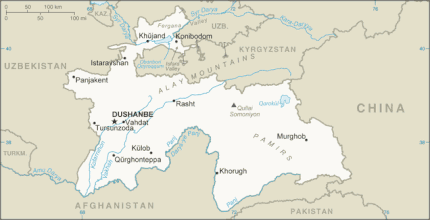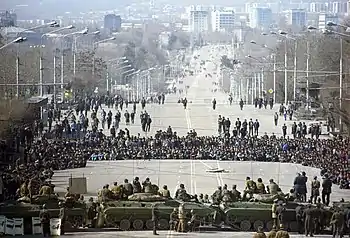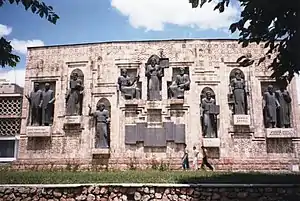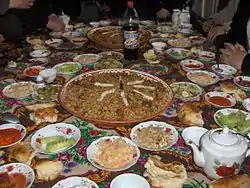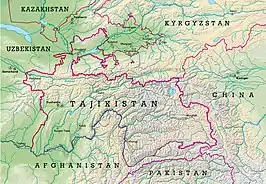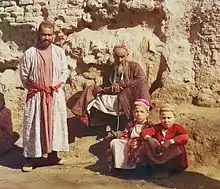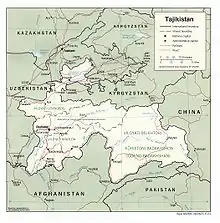The Tajikistan Portal
Tajikistan, officially the Republic of Tajikistan, is a landlocked country in Central Asia. It has an area of 142,326 km2 (54,952 sq mi) and an estimated population of 9,750,065 people. Dushanbe is the country's capital and largest city. It is bordered by Afghanistan to the south, Uzbekistan to the west, Kyrgyzstan to the north, and China to the east. It is separated narrowly from Pakistan by Afghanistan's Wakhan Corridor. Tajiks form the ethnic majority in the country and their national language is Tajik; a Persian language that is closely related to the mutually intelligible dialects of Farsi and Dari of Iran and Afghanistan. The territory that now constitutes Tajikistan was previously home to several ancient cultures of the Neolithic and the Bronze Age, including the city of Sarazm, and was later home to kingdoms ruled by people of different faiths and cultures, including the Oxus civilization, Andronovo culture, Buddhism, Nestorian Christianity, Hinduism, Zoroastrianism, Manichaeism, and Islam. The area has been ruled by numerous empires and dynasties, including the Achaemenid Empire, Sasanian Empire, Hephthalite Empire, Samanid Empire, and Mongol Empire. After being ruled by the Timurid Empire and Khanate of Bukhara, the Timurid Renaissance flourished. The region was later conquered by the Russian Empire and subsequently by the Soviet Union. Within the Soviet Union, the country's modern borders were drawn when it was part of Uzbekistan as an autonomous republic before becoming a full-fledged Soviet republic in 1929. (Full article...) Selected article -Bactria (/ˈbæktriə/; Bactrian: βαχλο, Bakhlo), or Bactriana, was an ancient Iranian civilization in Central Asia centered on Northern Afghanistan or areas that comprises most of modern-day Afghanistan, and including parts of southwestern Tajikistan and southeastern Uzbekistan. Called "beautiful Bactria, crowned with flags" by the Avesta, the region is considered in Zoroastrianism to be one of the sixteen perfect Iranian lands that the supreme deity Ahura Mazda had created. One of the early centres of Zoroastrianism and capital of the legendary Kayanian kings of Iran, Bactria is mentioned in the Behistun Inscription of Darius the Great as one of the satrapies of the Achaemenid Empire; it was a special satrapy and was ruled by a crown prince or an intended heir. Bactria was the centre of Iranian resistance against the Macedonian invaders after the fall of the Achaemenid Empire in the 4th century BC, but eventually fell to Alexander the Great. After the death of Alexander, Bactria was annexed by his general, Seleucus I. (Full article...)Did you know? -Subcategories Tajikistan Tajikistan-related lists Buildings and structures in Tajikistan Tajikistani culture Economy of Tajikistan Education in Tajikistan Environment of Tajikistan Geography of Tajikistan Government of Tajikistan Health in Tajikistan History of Tajikistan Organizations based in Tajikistan Tajikistani people Politics of Tajikistan Society of Tajikistan Images of Tajikistan Tajikistan stubs General imagesThe following are images from various Tajikistan-related articles on Wikipedia.
Related portalsReligions in Tajikistan Post Soviet states Other countries TopicsThings you can do
Selected image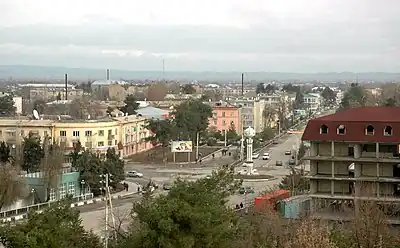 Credit: User:VargaA Qurghonteppa, Tajikistan
WikiProjects
Associated WikimediaThe following Wikimedia Foundation sister projects provide more on this subject:
Discover Wikipedia using portals
| ||||||||
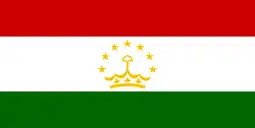

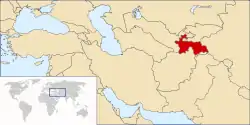
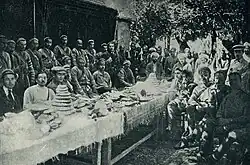


.JPG.webp)
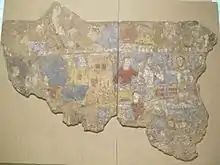
.jpg.webp)

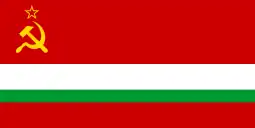
%252C_visiting_the_court_of_the_Tang_Dynasty._The_Gathering_of_Kings_(%E7%8E%8B%E4%BC%9A%E5%9B%BE)_circa_650_CE.jpg.webp)
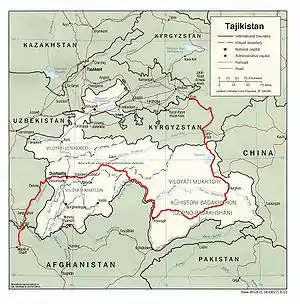


%252C_Temple_of_the_Oxus%252C_Takht-i-Sangin%252C_3rd-2nd_century_BCE_(left_side).jpg.webp)
